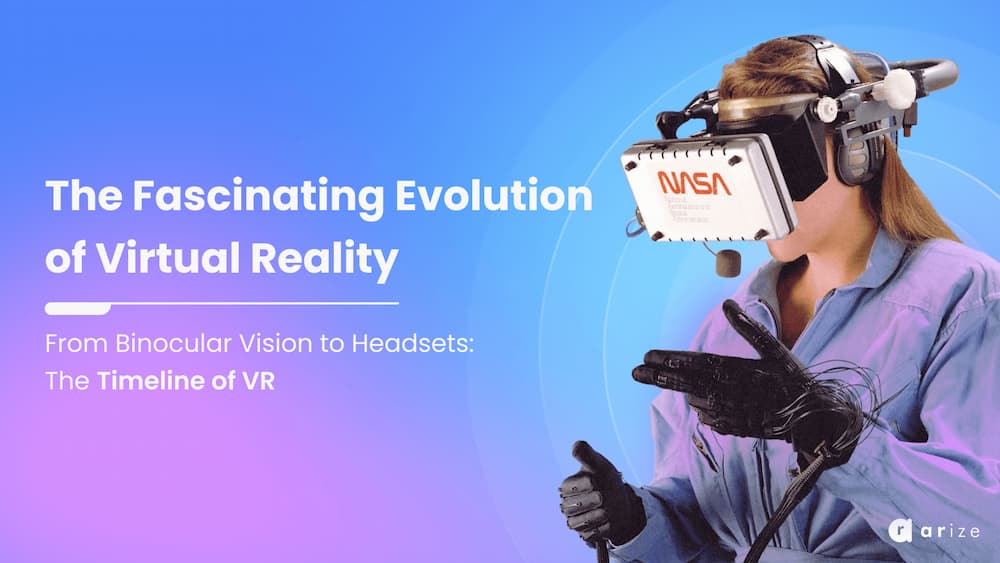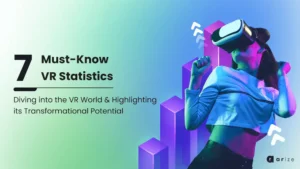The history of VR stretches back further than most people think. While Charles Wheatstone’s definition of stereopsis and binocular vision were the first steps in understanding how the human brain works visually, these concepts are the grounding that would lead to today’s VR tech. The first grounding started back in the 1930s.
VR technology has evolved significantly, with improvements on both the hardware and software side. However, issues such as latency, nausea, high prices, and underdeveloped ecosystems have previously been obstacles to widespread adoption. But the use of AI and cloud technologies to develop more robust ecosystems, while the arrival of 5G promises to address many issues.
So, how did we get to this point in time? Let’s go back over the timeline.
1930 – 1950
In 1935, science fiction writer Stanley Weinbaum wrote the short story Pygmalion’s Spectacles. In the story, the main character meets a professor who has invented a pair of goggles that enable the wearer to experience an alternate world through holographic, smell, taste, and touch. The character’s experience is quite close to the modern-day understanding of VR. This is widely regarded as the first reference to the VR phenomenon.
1951-1970
1956 – Cinematographer Morton Heilig invents Sensorama, the first patented VR machine. It is a large booth that combines multiple technologies to stimulate the senses. Six short films were developed to give viewers the whole Sensorama experience.
1960 – Heilig patents the Telesphere Mask, the first head-mounted display (HMD), providing stereoscopic 3D images with broad vision and stereo sound.
1966 – Thomas Furness, a military engineer, creates the first flight simulator. This was a landmark moment as the US military funded many simulator projects, which helped develop the technology faster.
1969 – Myron Krueger, a computer artist, developed a succession of “artificial reality” experiences using computers and video systems. He created computer-generated environments that responded to the people in them. This led to VIDEOPLACE technology being developed.
1971 – 2000
1975 – Kreuger develops VIDEOPLACE, the first interactive VR platform. It used computer graphics, projectors, video cameras, and position-sensing technology. It consisted of dark rooms, with large video screens to surround the user in “virtual reality.”
1979 – The McDonnell-Douglas Corporation integrated VR into its HMD, the VITAL helmet, for military use. A head tracker in the HMD followed the pilot’s eye movements to match computer-generated images.
1982 – Sandin and Defanti invented the first wired VR gloves. They monitor hand movements using light emitters and photocells in the gloves’ fingers. This is one of the early examples of gesture recognition.
1985 – Jaron Lanier and Thomas Zimmerman founded VPL Research, Inc. This company is known as the first company to sell VR goggles and gloves. They developed a range of VR equipment, such as the DataGlove, EyePhone HMD, and the Audio Sphere.
1991 – A NASA scientist named Antonio Medina designs a VR system to drive the Mars robot rover from Earth. NASA named the system Computer Simulated Teleoperation. In that same year, the Virtuality Group launched Virtuality. These were VR arcade machines where gamers could play in a 3D gaming world. This was the first mass-produced VR entertainment system.
1994-1995 – Both Segan and Nintendo release VR tech for gaming. Sega the VR-1, a motion simulator arcade machine, and Nintendo the Virtual Boy console, the first portable console to display 3D graphics. The Virtual Boy was discontinued after a year.
2001 – Present Day
2010 – 18-year-old- entrepreneur Palmer Luckey creates the initial prototype of the Oculus Rift headset. It featured a 90° field of vision, something VR technology had never seen up until this point. This new prototype invigorated interest in the field of VR.
2014 – Facebook bought the Oculus VR company for $2 billion, a turning point in modern history as the technology gained more momentum. Sony, Google, and Samsung announced their own VR projects, and more companies started exploring the possibilities of VR.
2019 – Described as the year “Virtual Reality Gets Real.” The shift from tethered to standalone VR headsets represented a shift within the immersive ecosystem, as standalone headsets are much easier to use for the average consumer. Road to VR reported that the monthly-connected VR headsets on Steam had surpassed 1 million for the first time.
2021 – Meta (formerly Facebook) announces plans to spend at least $10 billion on Facebook Reality Labs, the division tasked with creating VR and AR hardware, software, and content.
“Virtually” Unstoppable
Many more moments throughout history have shaped the technology we know and love today, but these are just some milestone moments along the way.
However, the journey is not yet complete, and as technology becomes more and more accessible, the demand for accessibility and innovation also increases.
Finally, Virtual Reality will continue its journey and become integral to our daily lives.



